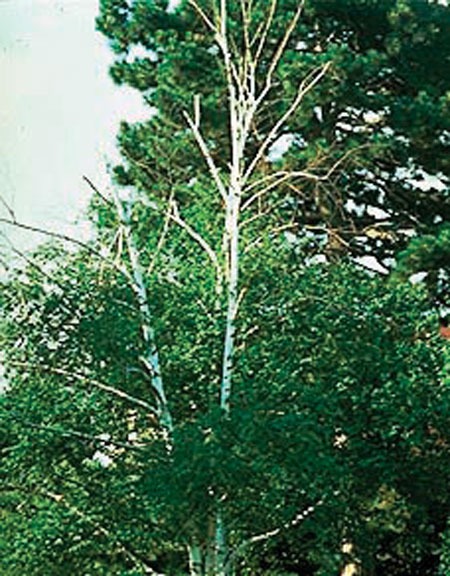Bronze birch borer

Bronze birch borer is an insect that can be very damaging, even fatal to birch trees. This insect is among the most damaging to trees, commonly known as flat headed borers. The life cycle of the bronze birch borer damages the vascular system of the tree during the larval stage. This damage limits the flow of water and photosynthates throughout the tree. Feeding by larvae causes thinning and eventually dieback in the upper canopy, where it is hardest for a tree to move water. River birch is more resistant to this insect than the white barked birch trees. Birch trees that are stressed, most often from a lack of water, are prone to this insect.
Treatment for bronze birch borer is most effective when done in the early stages of the insects’ establishment. An injection of a systemic insecticide provides effective control wherever the vascular system is still functioning. We provide an assessment of the damage on your birch tree to give you realistic expectations on how the treatment can help your birch trees. Cultural practices, including mulching, watering and fertilization can also keep your birch healthy.
Twolined chestnut borer – Twolined chestnut borer is a common insect that attacks oak trees in the Twin Cities metro area. The insect damages the vascular system, inhibiting the flow of water and nutrients of the host tree, and can be fatal. Members of the white oak group (bur and white) are most damaged, but red oaks can also be affected by twolined chestnut borer. This insect is a native relative of Emerald ash borer. It is considered a secondary insect as healthy trees can use their natural defenses to ward off damage. However, a tree that is stressed will become vulnerable as it spends an ever-increasing amount of energy on defending itself.
Treatments to control twolined chestnut borers are most effective when done preventively. A systemic insecticide is injected directly into the vascular system of an oak tree that remains effective for approximately two years. Accurately diagnosing the insect and the level of damage in an oak tree is imperative in a successful treatment to control twolined chestnut borer. It is also very important to try to determine the root causes of stress, and to improve the vigor of the host tree. This allows the tree to use its natural defenses against this insect.
Oak trees are often the focal point of our landscapes as some of the oldest and largest specimens in the upper Midwest. Contact us for a free consultation to develop a customized oak wilt treatment plan to protect your invaluable trees.
